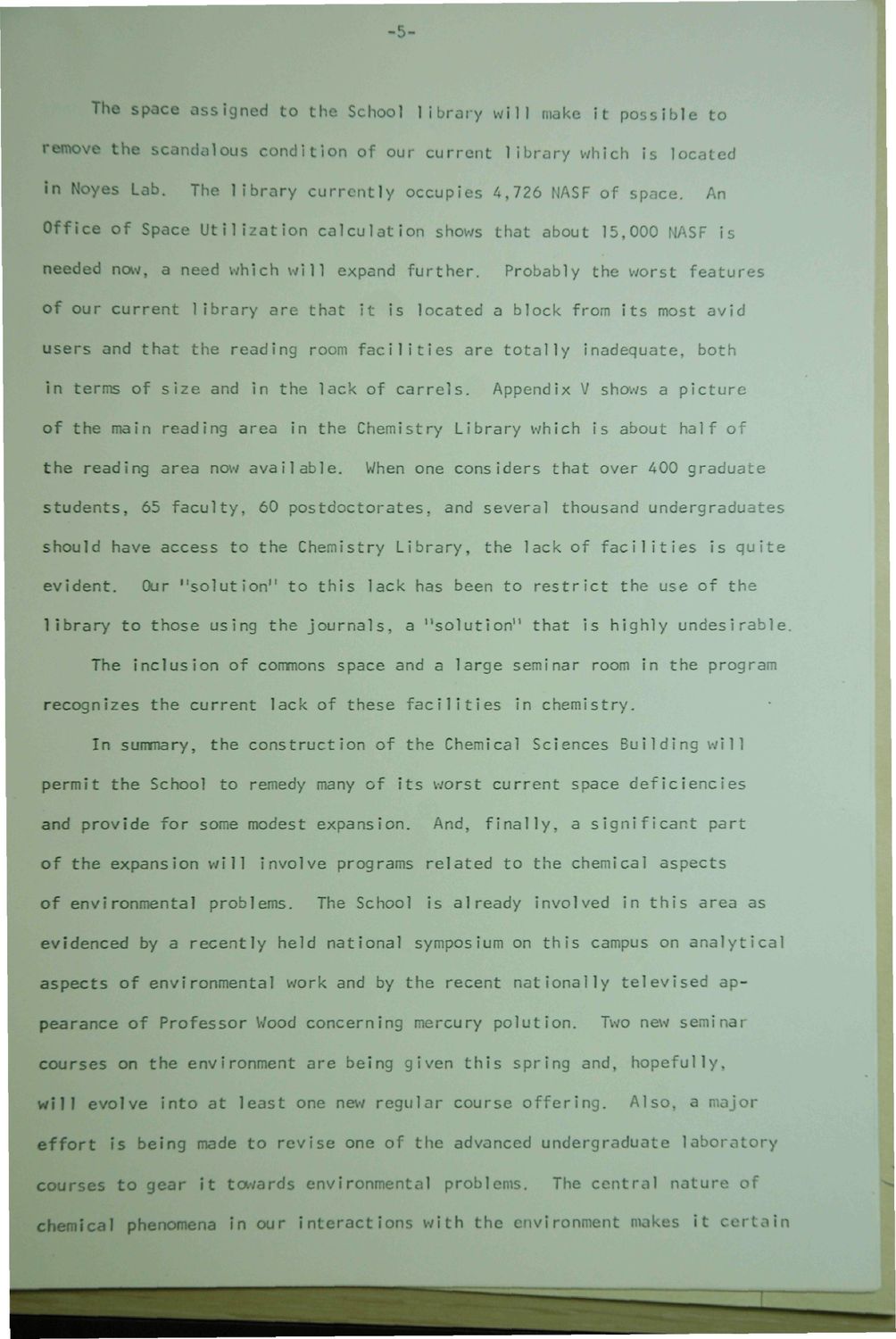Caption: Planning Report - Chemical Sciences Building
This is a reduced-resolution page image for fast online browsing.

EXTRACTED TEXT FROM PAGE:
-5- The space assigned to the School library will make it possible to remove the scandalous condition of our current library which is located In Noyes Lab. The library currently occupies 4,726 NASF of space. An Office of Space Utilization calculation shows that about 15,000 NASF is needed now, a need which will expand further. Probably the worst features of our current library are that it is located a block from its most avid users and that the reading room facilities are totally inadequate, both In terms of size and in the lack of carrels. Appendix V shows a picture of the main reading area in the Chemistry Library which is about half of the reading area now available. When one considers that over 400 graduate students, 65 faculty, 60 postdoctorates, and several thousand undergraduates should have access to the Chemistry Library, the lack of facilities is quite evident. Our "solution" to this lack has been to restrict the use of the library to those using the journals, a "solution11 that is highly undesirable. The inclusion of commons space and a large seminar room in the program recognizes the current lack of these facilities in chemistry. In summary, the construction of the Chemical Sciences Building will permit the School to remedy many of its worst current space deficiencies and provide for some modest expansion. And, finally, a significant part of the expansion will involve programs related to the chemical aspects of environmental problems. The School is already involved in this area as evidenced by a recently held national symposium on this campus on analytical aspects of environmental work and by the recent nationally televised appearance of Professor Wood concerning mercury polution. Two new seminar courses on the environment are being given this spring and, hopefully, will evolve into at least one new regular course offering. Also, a major effort is being made to revise one of the advanced undergraduate laboratory courses to gear it towards environmental problems. The central nature of chemical phenomena in our interactions with the environment makes it certain
|